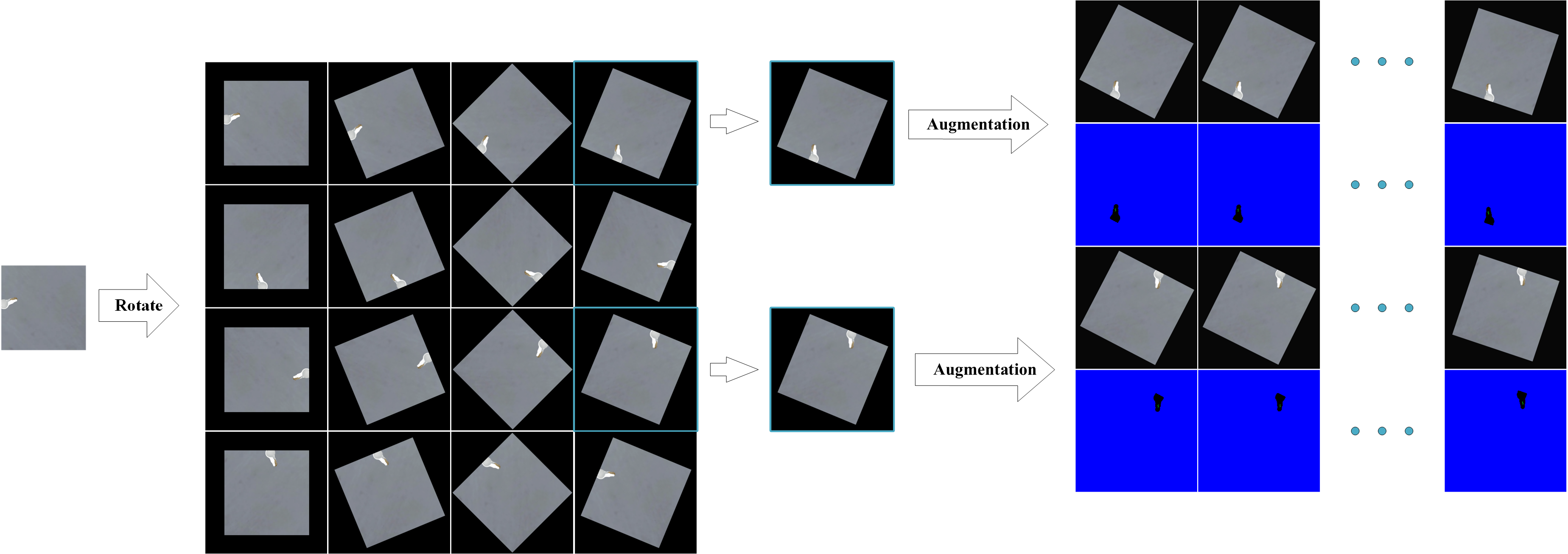MetaGrasp: Data Efficient Grasping by Affordance Interpreter Network
This repository is the code for the paper MetaGrasp: Data Efficient Grasping by Affordance Interpreter Network
Junhao Cai1 Hui Cheng1 Zhangpeng Zhang2 Jingcheng Su1
1Sun Yat-sen University 2Sensetime Group Limited
Accepted at International Conference on Robotics and Automation 2019 (ICRA2019) .
Fig.1. The grasp system pipeline.MetaGrasp: Data Efficient Grasping by Affordance Interpreter Network
Abstract Data-driven approach for grasping shows significant advance recently. But these approaches usually require much training data. To increase the efficiency of grasping data collection, this paper presents a novel grasp training system including the whole pipeline from data collection to model inference. The system can collect effective grasp sample with a corrective strategy assisted by antipodal grasp rule, and we design an affordance interpreter network to predict pixelwise grasp affordance map. We define graspability, ungraspability and background as grasp affordances. The key advantage of our system is that the pixel-level affordance interpreter network trained with only a small number of grasp samples under antipodal rule can achieve significant performance on totally unseen objects and backgrounds. The training sample is only collected in simulation. Extensive qualitative and quantitative experiments demonstrate the accuracy and robustness of our proposed approach. In the real-world grasp experiments, we achieve a grasp success rate of 93% on a set of household items and 91% on a set of adversarial items with only about 6,300 simulated samples. We also achieve 87% accuracy in clutter scenario. Although the model is trained using only RGB image, when changing the background textures, it also performs well and can achieve even 94% accuracy on the set of adversarial objects, which outperforms current state-of-the-art methods. Citing If you find this code useful in your work, pleace consider citing:
@article{cai2019data,
title={Data Efficient Grasping by Affordance Interpreter Network},
author={Junhao Cai, Hui Cheng, Zhanpeng Zhang, Jingcheng Su},
booktitle={IEEE Conference of Robotics and Automation},
year={2019}
}Contact
If you have any questions or fine any bugs, please contact to Junhao Cai (caijh28@mail2.sysu.edu.cn).
Requirements and Dependencies
- Python 3
- Tensorflow 1.9 or later
- Opencv 3.4.0 or later
- NVIDIA GPU with compute capability 3.5+
Quick Start
Given an RGB image containing the whole workspace, we can obtain the affordance map using our pre-trained model by:
- Download our pre-trained model:
./download.sh
- run the test script:
The visual results are saved in the output folder.
python metagrasp_test.py \ --color_dir data/test/test1.png \ --output_dir data/output \ --checkpoint_dir models/metagrasp
Training
To train new model, you should follow the steps below :
Step 1: Collect the dataset
You can obtain grasp dataset in V-REP using our data collecting system,
the details can be seen in data_collection/README.md.
Step 2: Preprocess the data After the data collection, you should preprocess the data for the data converting process. Run the script:
python data_processing/data_preprocessing.py \
--data_dir data/3dnet \
--output data/trainingThen use data_processing/create_tf_record.py to generate positive and negative tfrecords.
python data_processing/create_tf_record.py \
--data_path data/training \
--output data/tfrecords Step 3: Download pre-trained model
We use Resnet as initialized parameters of feature extractor of the model, you can have access to the pre-trained model here.
mkdir models/checkpoints && cd models/checkpoints
wget http://download.tensorflow.org/models/resnet_v1_50_2016_08_28.tar.gz
cd ../..Step 4: Train the model
Then you can train the model with the script ain_train_color.py.
For the basic usage the command will look something like this:
python metagrasp_train.py \
--train_log_dir models/logs_metagrasp
--dataset_dir data/tfrecords
--checkpoint_dir models/checkpointsYou can visualize the training results using Tensorboard by the following command:
tensorboard --logdir=models/logs_metagrasp --host=localhost --port=6666Data format
In this section, we will first introduce the data structure of a grasp sample, then we will illustrate how to preprocess the sample so that we can obtain horizontally antipodal grasp data.
1. Data structure
A grasp sample consists of 1) the RGB image which contains the whole workspace, 2) the grasp point represented by image coordinates in image space, 3) the grasp angle, and 4) the grasp label with respect to the grasp point and the grasp angle. Note that we only assign the labels to the pixels where we do grasp trial, so we don't use the other regions of the grasp object when training. The visualization of a sample is shown as below.
Fig.2. Raw image captured from vision sensor. Fig.3. Cropped images and grasp label.2. Data after preprocessing
During the preprocessing, we first rotate the RGB image and select the rotated images which satisfy the horizontally antipodal grasp rule. Then we augment the data by slightly rotate the images and corresponding grasp angles. The whole process is shown in Fig.4.
Fig.4. Cropped images and grasp label.





